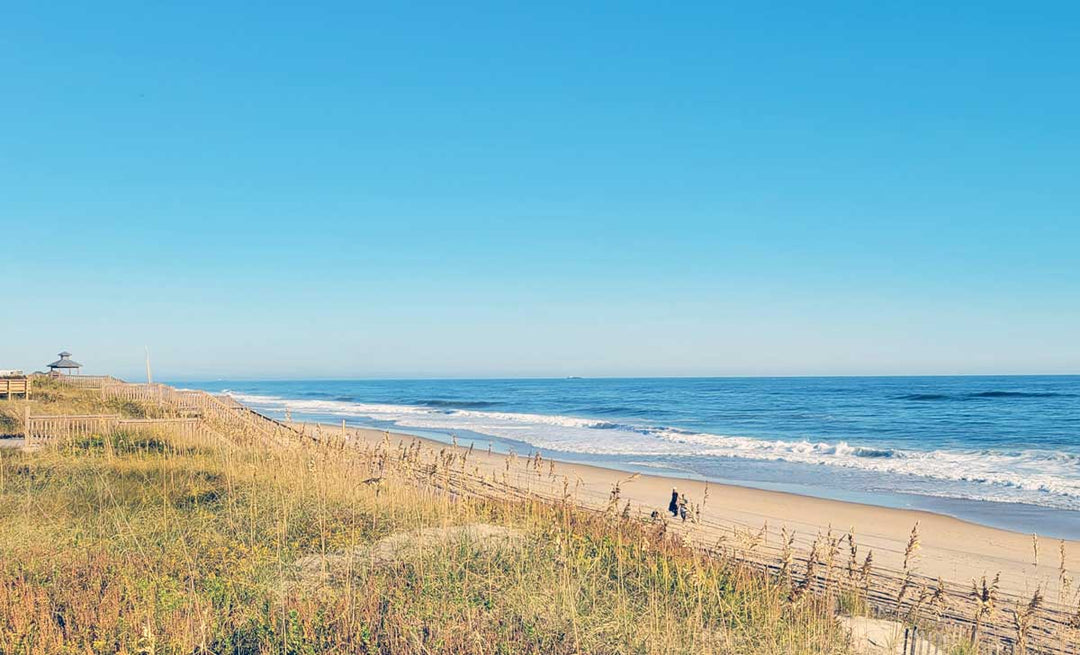History of Kitty Hawk NC


Long before the Wright brothers made Kitty Hawk famous with their flight experiments, this area experienced a rich history. Native American Indians first settled on the Outer Banks over a thousand years ago.
The area was visited by French and Spanish explorers in the early 1500s. The English Captain Arthur Barlowe arrived here in 1584. This explorer traveled to Albemarle Sound through an inlet that was located at the present-day site of Jeanguite Creek in Southern Shores.
The Captain explored Kitty Hawk as well as the Roanoke Island area. The following description by Captain Arthur Barlowe about the area comes from David Sticks' excellent book entitled, “The Outer Banks of North Carolina”.
“Wee viewed the lande about us, being…very sandie, and lowe towards the water side, but so full of grapes, as the very beating, and surge of the Sea overflowed them, of which we founde such plenty…that I thinke in all the world the like aboundance is not to be found..
We passed from the Sea side towards the toppes of those hils next adioyning, being but of meane height, and from thence wee behelde the Sea on both sides to the North, and to the South, finding no ende any ofboth waies. This lande laye stretching it selfe to the West, which after wee founde to be but an Island ot twentie leagues long, and not above sixe miles broade. Under the banks or hill, whereon we stoode, we behelde the vallies replenished with goodly Cedar trees, and having discharged our harquebushot, such a flocke of Cranes(the most part white)arose under us, with such a crye redoubled by many Ecchoes, as if an armie of men had showted all together. This Island had many goodly woods, full of Deere, Conies, Hares, and Fowle, even in the middest of Summer, in incredible aboundance…and the highest, and reddest Cedars of the world”.
Drake was visiting the Kitty Hawk area after a successful cruise plundering Spanish treasure ships. This is the same CaptaIn 1584 the first English colony in the new world was established at Roanoke Island, less than 20 miles from Kitty Hawk.
This was 34 years before the Jamestown colony in Virginia was established. The settlement didn't prosper, and the starving colonists left In 1585 aboard a ship in the visiting fleet of Captain Sir Francis Drake.n, that in 1588 defeated the Spanish Armada.
The King of Spain sent the Armada against England in an effort to put a stop to the English habit of raiding Spanish gold ships sailing from the new world back to Spain. Drake's victory against the Spanish signaled the decline of Spain and the ascent of England as a world power.
That first group of settlers was replaced in 1587, by another group of colonists on the north end of Roanoke Island. This attempt was organized by Sir Walter Raleigh and produced Virginia Dare, the first English child born in America. This colony vanished into an unknown fate.
When re-supply ships finally arrived in 1590 delayed by the war with Spain, no colonists were to be found. The only clue being the word "Croatoan" carved into a tree. Archaeologists are still attempting to solve the mystery of the lost colony. Raleigh would later meet his death in the famous Tower of London for other misdeeds of his time.
Years later, the area was ravaged by Black Beard the pirate. Eventually, Lieutenant Robert Maynard of HMS Pearl began the hunt for Blackbeard, which led to an engagement in Ocracoke Harbor. In a brief but fierce battle, Blackbeard was defeated and suffered his head being hung from the bowsprit of the warship. Since then the North Carolina coast has remained relatively free from pirates.
The famous union ironclad Monitor fought the Merrimac just a few miles north of Kitty Hawk and later journeyed past this coastal area towards its tragic sinking in a storm off Cape Hatteras about sixty miles away.
Some locals say that the name Kitty Hawk is derived from the local Native American name for goose hunting season: "killy honker" or "killy honk." Others say the name evolved from mosquito hawks that populated the area, or from ospreys that preyed on the area's kitty wren.
Looking for a remote site, away from prying eyes, Orville and Wilbur Wright came here to experiment with gliders after hearing that the "winds were always steady, generally from 10 to 20 miles per hour ... and not a tree or a bush anywhere to break the wind current."
The Wright brothers lived in Kitty Hawk Village and conducted many of their experiments there, but it was actually in Kill Devil Hills, about three miles south, that they made their historic first engine-powered flight.
Kitty Hawk's initiation as a vacation destination took root in the 1930s when the Wright Memorial Bridge Company created a three-mile wooden span across the Currituck Sound to the Outer Banks. Today, only a few of the first cottages built on the beach can still be seen due to the ever-changing shoreline.
Since 1993, scores of houses have been swept away during hurricanes and nor'easters.
Although Kitty Hawk owes much to the Wright Brothers for bringing attention to the area, history has touched this area in many other ways that few places can compare with.






Leave a comment